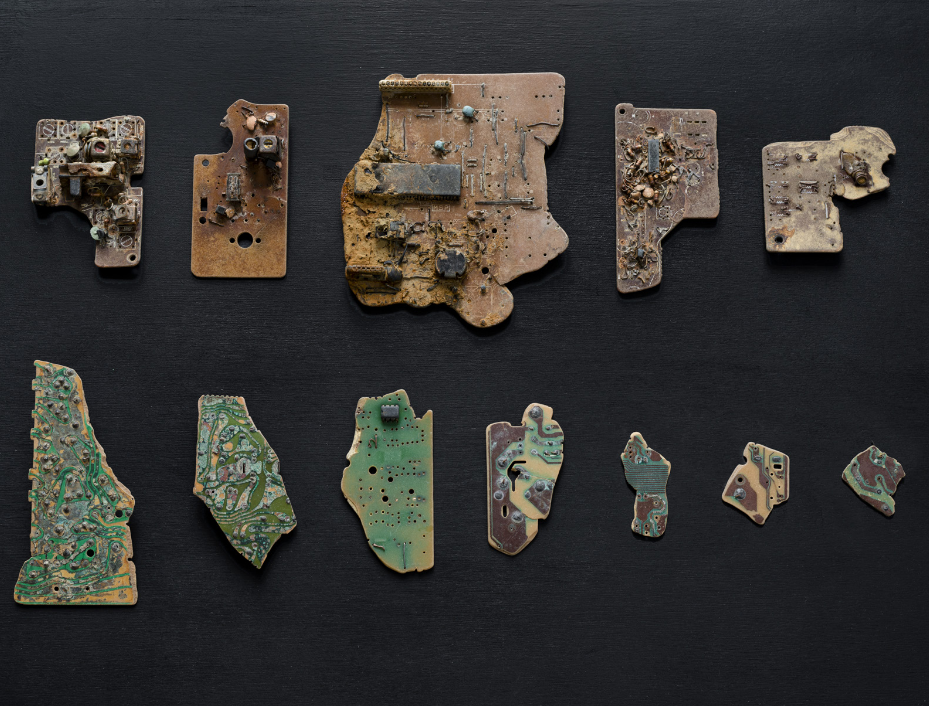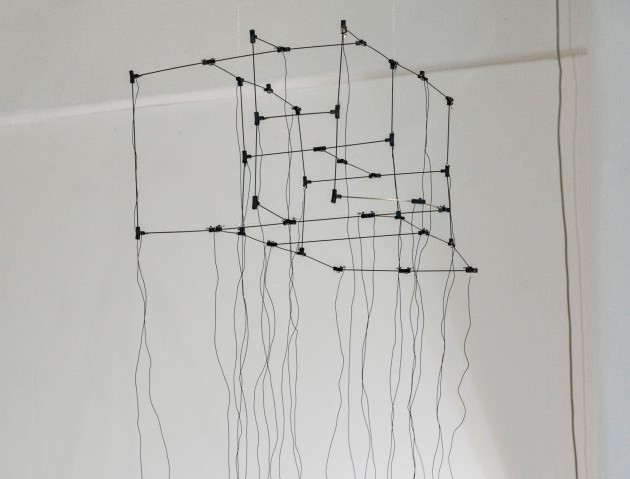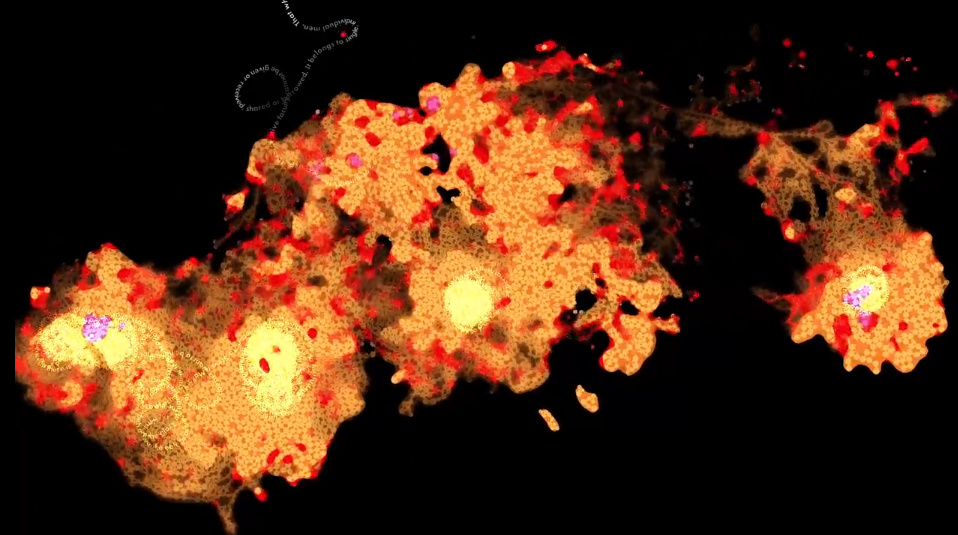It seems lately I am drawn to documenting my thoughts about art. Covering Goodsell’s microart, Haeckel’s zoology paintings, Nelson’s bio-horrors and even, arguably, Turing’s endless morphological patterns. This journal is no exception. While trawling through material on last year’s Artificial Life Conference (or ALife 2018), I came across the ALife Art Award, which celebrates art “that makes us change our understanding of life”. Judged by a fascinating handful or artists and researchers, I was interested to see what an artist’s perspective on the field of artificial life had to offer to my research perspective. Here I will briefly outline a few entries I was especially drawn to.
Tamesiology/Meseum for a Future by Olivia Guigue
This entry won the Grand Prize of the competition, and hence it was an obvious choice. The work depicts a selection of pieces collected from the foreshore of the river Thames’ in London. We are all most likely familiar with childhoods spent collecting ‘special’ pebbles on the shoreline that were out of the ordinary of the usual pebbles on the beach. These pieces had the a topology and smoothness similar to the casual pebble, but with stark reds, greens, or blues, and translucent properties. If your childhood was like mine, later you learned that these pebbles were actually glass in disguise and the infatuation with them waned. Olivia asks us to imagine what our ancestors centuries into the future will find on their shorelines. Sea glass will probably be among the ‘special’ pebbles, but now we live in a world consumed by silicon and circuit boards, there are some more likely possibilities.

This work resonates well with many of my personal ideas about our technological progress. For centuries, humans have sought straight lines in their architecture - pristine stone bricks, squared tables, and now the rigid edges of robots and the computers that control them. Contrastingly, nature abolishes the use of straight line, instead allowing for imperfections to enhance the macro-features of an organism. Olivia’s pieces gives us a clear example of how humanity’s strive for perfection are in vain, and ask us to question what the technology of the future will be. This aligns well with the general motif for artificial life researchers: that engineers and designers should embrace the methods of nature through inspiration in biology and evolution. Our currently technology is pebbles in comparison to the laws that created life on this Earth.
Mutiertes L-System by Lukas Stover
I wanted to like this one. L-systems are beautiful depictions of how simple rules (in this case grammars) can lead to complex behaviour. Disappointingly, no video seems to exist showing Lukas’s L-system growing. The only video just portrays the final structure and its cacophony of wires. Here’s a photo of the final growth:

An Ego-Altruist Society by Pedro Cruz and Andre Cunha
Is the individual inately selfish, that is, egotistical, or selfless, that is, altruistic? Cruz and Cunha attempted to answer this question by simulating an ecosystem in which both types of individuals live. In their simulation world, each individual, called an agent, needs energy to move and live. As an agent moves, it consumes its energy supply. Energy is in the form of streaks that pass through the word like light waves and each agent has a maximum energy capacity. An egotistical agent can absorb energy from the environment by moving over the energy streak; an altruistic agent lacks the ability to gain energy from the environment and therefore must interact with other agents to get energy. When two agents interact, there are three possible outcomes. Two altruists meeting will result in distributing their energy fairly between each other; two egotists meeting will result in no distribution of energy because egotists are selfish. Lastly, if an egotist and altruist meet, the altruist will cede its energy to the egotist if it is below its energy capacity, while the egotist will only transmit energy to the altruist if the egotist is above its energy capacity. Altruists are the only ones whom can increase the population size. They perform mitosis once their energy is double its capacity. In contrast, an egotist will die when its energy is double its capacity. All agents die when energy levels go to zero. Some mesmerising results of this ruleset can be found in their accompanying video (orange is altruist, red is egotist, and pink are new agents).

Interesting dynamics evolve from these simple rules. Both altruists and egotists rely on one another for survival. If a pocket of altruists and egotists separate from the body, they generally struggle to survive if the population is small. Egotists will be unable to absorb enough energy from the environment and the altruists, killing the altruists. The death of the egotists then follows as they are bloated by their greed.
I conclude by also mentioning Bert Chan’s Lenia. This entry wasn’t included in my list above because I don’t think it differentiates much from cellular automata such as Smooth Life or Multiple Neighbourhoods Cellular Automata. Nonetheless, it is infatuating.